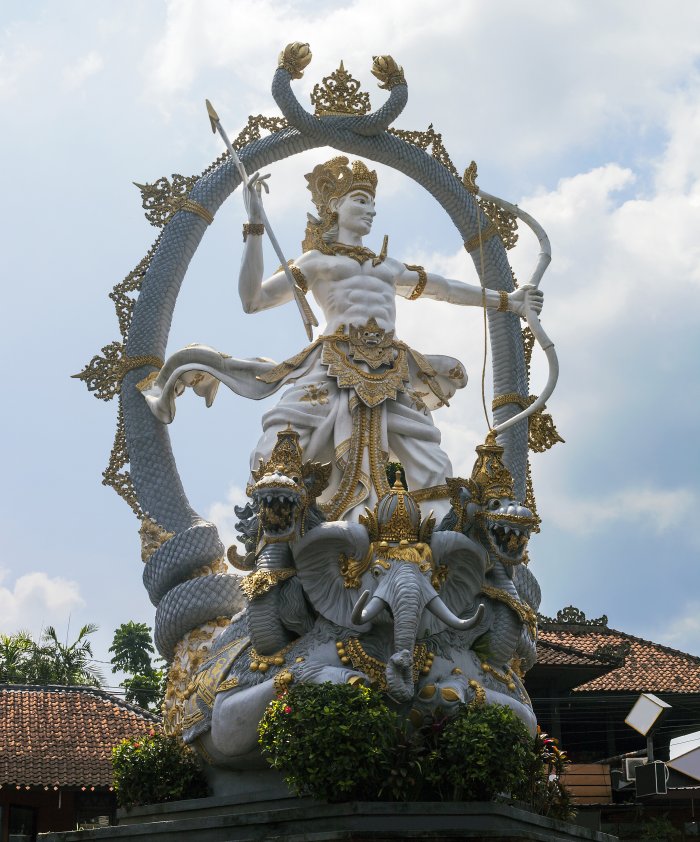Mahabharata And Ramayana – Two Major Sanskrit Epics Of Ancient India
Ellen Lloyd - AncientPages.com - Mahabharata and Ramayana are two major Sanskrit epics of ancient India. These two literary masterworks contain a wealth of information and hold a special place in the hearts of Indian people.
"The fabric of Hindu culture is woven with characters and values from these two epics. Among all heroes, Rama and Krishna are highly respected and worshipped by Indian people with loving hearts. Both epics were repeated by people with devotion years after years. Stories of heroes from these two epics were retold thousands of time for character building of children in home and schools. Almost all Indian people believe the incidents described in epics did actually happen in prehistoric times." 1
Sculpture of Hindu God Krishna and Arjuna. Credit: Adobe Stock - takepicsforfun
Some dismiss stories in the Mahabharata and Ramayana as myths, but a couple of archaeological discoveries have offered evidence certain events were actual. For example, Krishna's legendary Dwarka was long considered a mythical place. Still, underwater archaeologists have found the ruins of this amazing ancient city, a discovery that confirmed Hindu epics were based on actual events.
Philosophy is a significant subject in Hinduism, which is apparent when we read the Vedas and the Upanishads. The term Veda comes from the root Vid and means "to know." The Veda is divided into four great books: the Rig-Veda, the Yajur -Veda, the Sama-Veda, and the Atharva-Veda.
Both Mahabharata and Ramayana are very religious literary works, full of stories deeply rooted in Indian philosophy.
Students of the ancient history of India will find there is much to learn from the Itihasas and the Puranas. The Itihasas, meaning "histories" consist of four books: the Ramayana, the Yogavasishtha, the Mahabharata, and the Harivamsa. The Ramayana and the Mahabharata are better known. The Ramayana describes the life of Rama, who is the seventh incarnation of Lord Vishnu, the supreme God in charge of the preservation of the Universe. The Mahabharata relates the Great War between the cousins Kauravas and Pandavas. This event occurred during the eighth incarnation of Lord Vishnu.
Mahabharata - The Longest Poem Ever Written
"The word Mahabharata comprises the syllables' maha', 'bha', 'ra' and 'ta'. 'Maha', of course, means great; 'bha', 'ra' and 'ta' stand for, respectively, 'bhava', 'rasa' and 'tala', the three attributes of dance. Mahabharata, the word, is thus an expression for the great dance – the Cosmic Dance of Shiva – and as personification, the Great Dancer, Lord Shiva Himself." 2
Although it is unlikely that any single person wrote the poem, the authorship of the Mahabharata is attributed to the sage Vyasa, who, as the grandfather of the Pandavas and Kauravas is himself, is the central character of the legend.
Consisting of almost 100,000 couplets and about 1.8 million words, the Mahabharata is the longest poem ever written. The ancient Hindu epic is ten times the length of the Iliad and the Odyssey combined.
The epic is based on the conflict between two groups of cousins, the five Pandavas, the sons of King Pandu and Queen Kunti, and the one hundred Kauravas, who are the sons of King Dhritarashtra and Queen Gandhari. Pandavas are hailed as Indras or sons of Dharma, Vayu, Indra, and Ashvins. The Pandavas and the Kauravas are distant descendants of the ancient king of the Lunar Dynasty named Kuru.
Considered the greatest spiritual epic of all time, the Mahabharata takes the reader on a marvelous and unforgettable journey to wonderful places and encounters with sages, heroes, warrior kings, and other colorful personalities. The Mahabharata is unique because the epic also delivers profound lessons about every aspect of life.
The story's central plot is about the dynastic struggle for the throne of Hastinapura, the kingdom ruled by the Kuru clan. One of the major characters in Mahabharata is Arjuna, one of the five sons of Pandu. Arjuna, considered a demigod, was born when Indra, the God of rain, blessed Kunti and Pandu with a son.
Street statue Arjuna at crossroads in Ubud, Bali. Credit: Abode Stock - dmf87
The struggle between the Pandavas and the Kauvaras culminates in the great battle of Kurukshetra. Shortly before the battle, Arjuna shows signs of insecurity and doubts about the fight's outcome, which will lead to the deaths of many worthy people, including his relatives. However, Lord Krishna convinces Arjuna to take part in the battle, explaining his duty as a warrior and a prince and setting out to him the various philosophical systems. The decisive battle of Kurukshetra ends with the total destruction of all the Kauravas. The five Pandavas, including Lord Krishna, are victorious.
The Mahabharata ends with the death of Lord Krishna and the subsequent end of his dynasty and ascent of the Pandava brothers to heaven. This event marks the beginning of the Hindu age of Kali Yuga, the fourth and final age of humankind. According to Hindu beliefs, we live in the yuga of "Kali," the Goddess of Destruction.
The Pandavas in King Drupad's Court. Folio from a Mahabharata ([War of the] Great Bharatas), circa 1775-1800. Credit: Los Angeles County Museum of Art - Public Domain
It cannot be denied that the Mahabharata is filled with stories about violence, deceit, bloodshed, war, abduction, injustice, greed, and lust. So, how can this epic be considered a spiritual masterpiece?
One of the reasons the Mahabharata is a sacred text is because of Lord Krishna's presence, but there is also much more this incredible literary work has to offer.
According to the author Diwaker Ikshit Srivastava, "all the strengths and weaknesses of human nature – valour and chivalry, cunning and deceit, daring and romance, lust and greed, righteousness and depravity – are woven into this intricate and fast-moving panoramic tale that has enthralled listeners for well over five millennia. The Mahabharata, however, is no fable; it is the pinnacle of human thought and understanding. This remarkable poem, which appears mythical in character, is the verbal expression of the direct experience by the sage Vyasa, of the ultimate truth – of Lord Shiva, the Primordial Creator and of His illusion – the Dance of Shiva, His dance of death, the evolution of a new creation.
The Mahabharata is the story of life. The purpose of life is to experience the divine mystery that is life: the majesty and glory expressed in the infinite forms of creation, our position in this cosmic order and the eventual realisation of our own divinity. Life is God's bounty, a gift that must be lived and enjoyed – with gratitude.
The Mahabharata is about life and living, the here and now, and covers the five stages of human life: Bal Avastha (living with our parents – experiencing God in our parents), Brahmacharya (living with a guru– experiencing God in our guru), Grihastha Ashram (living with society at large – experiencing God in every human being), Vana Prastha (living with nature – experiencing God in all nature) and Vairagya (living with self – experiencing God in oneself).
The Mahabharata is the most exhaustive exploration ever of the human condition.
It thus covers passion (Kama) and its exhaustion (Moksha) and the in-between, the wealth of happiness (Artha) and balance or order (Dharma) – the means of its achievement." 2
Ramayana - King Rama's Journey
Ramayana is like the Mahabharata, a Hindu epic but much shorter. Written by the legendary sage Valmiki, it consists of some 24,000 couplets divided into seven books. Ramayana focuses on the campaign of King Rama, who is the incarnation of Vishnu.
Rama leaving for fourteen years of exile from Ayodhya. Credit: Public Domain
King Rama takes on a human form to overcome evil and establish virtue. He must free people from the power of the evil Rakshasa and king Ravana. Rama is a respectable person, an example of all virtues.
On his journey, he is no longer helped by the Vedic gods headed by Indra but also by new deities - Kama, Kubera, Kartikeya, Ganga, Lakshmi, Uma.
Gold carving depiction of the legendary Ayodhya at the Ajmer Jain temple. Credit: Vaibhavsoni1 - CC0
The wives of Shiva and Vishnu begin to appear. The reader is also introduced to different sacred animals such Sesha (snake), Hanuman (king of monkeys), Jambavat (bear), Garuda (eagle), Jataya (vulture), and Nandi (bull).
The Mahabharata and the Ramayana are remarkable Sanskrit epics worth reading. These ancient masterworks can be appreciated even by those of a different religion.
Updated on January 21, 2023
Written by Ellen Lloyd – AncientPages.com
Copyright © AncientPages.com All rights reserved. This material may not be published, broadcast, rewritten or redistributed in whole or part without the express written permission of AncientPages.com
Expand for references- Joshi, Narayan. "Mahabharata: History Or Myth? MYTH?" Annals of the Bhandarkar Oriental Research Institute91 (2010): 47-60.
- Diwaker Ikshit Srivastava - Decoding the Metaphor Mahabharata
- John D. Smith - The Mahabharata
- K. Narayan - The Ramayana: A Shortened Modern Prose Version of the Indian Epic
More From Ancient Pages
-
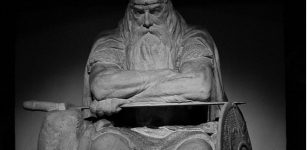 Legend Of Sleeping Hero Holger Danske: Viking Warrior Who Never Died
Featured Stories | May 8, 2016
Legend Of Sleeping Hero Holger Danske: Viking Warrior Who Never Died
Featured Stories | May 8, 2016 -
 Mysterious Jade Cong – Perplexing Ancient Chinese Artifact
Featured Stories | Jan 3, 2023
Mysterious Jade Cong – Perplexing Ancient Chinese Artifact
Featured Stories | Jan 3, 2023 -
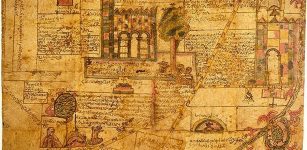 What Does The Mexican Codex Map Represent?
Ancient History Facts | May 21, 2018
What Does The Mexican Codex Map Represent?
Ancient History Facts | May 21, 2018 -
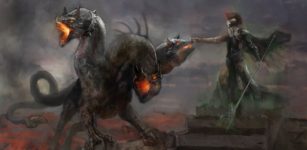 Cerberus – Giant Multi-Headed Dog Guards The Underworld Of God Hades In Greek Mythology
Featured Stories | Jun 2, 2020
Cerberus – Giant Multi-Headed Dog Guards The Underworld Of God Hades In Greek Mythology
Featured Stories | Jun 2, 2020 -
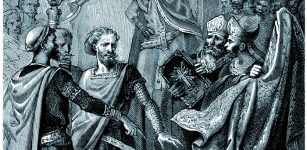 William The Conqueror: Ruthless And Powerful Ruler Who Changed Britain Forever
Featured Stories | Feb 25, 2023
William The Conqueror: Ruthless And Powerful Ruler Who Changed Britain Forever
Featured Stories | Feb 25, 2023 -
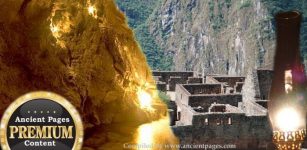 Pre-Columbian Americans Mastered Electricity – Ancient Inscription And Document Reveal Proof Of Advanced Ancient Technology
Ancient Mysteries | Feb 4, 2018
Pre-Columbian Americans Mastered Electricity – Ancient Inscription And Document Reveal Proof Of Advanced Ancient Technology
Ancient Mysteries | Feb 4, 2018 -
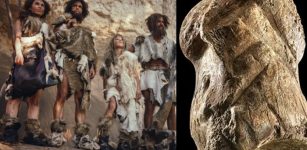 51,000-Year-Old Bone Carving Shows Neanderthals Were Artistic Long Before Humans Arrived
Archaeology | Jul 6, 2021
51,000-Year-Old Bone Carving Shows Neanderthals Were Artistic Long Before Humans Arrived
Archaeology | Jul 6, 2021 -
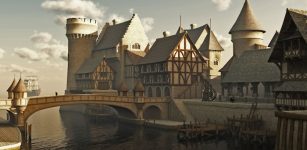 Has Yorkshire’s Lost Underwater Town Ravenser Odd Finally Been Found?
News | Mar 26, 2022
Has Yorkshire’s Lost Underwater Town Ravenser Odd Finally Been Found?
News | Mar 26, 2022 -
 Who Is Buried In The Giant Etruscan Tomb At San Giuliano Necropolis?
Archaeology | Mar 13, 2024
Who Is Buried In The Giant Etruscan Tomb At San Giuliano Necropolis?
Archaeology | Mar 13, 2024 -
 Medicine in Antiquity: From Ancient Temples To Roman Logistics
Archaeology | Apr 13, 2018
Medicine in Antiquity: From Ancient Temples To Roman Logistics
Archaeology | Apr 13, 2018 -
 Surprising Discovery Of A Perfectly Ancient Road Shows Romans Moved Deeper Into Wales Than Previously Thought
Archaeology | Jul 2, 2022
Surprising Discovery Of A Perfectly Ancient Road Shows Romans Moved Deeper Into Wales Than Previously Thought
Archaeology | Jul 2, 2022 -
 On This Day In History: Army Of Tsar Alexander I Of Russia Enters Paris – On March 31, 1814
News | Mar 31, 2016
On This Day In History: Army Of Tsar Alexander I Of Russia Enters Paris – On March 31, 1814
News | Mar 31, 2016 -
 The Iron Man In The Kottenforst And Other Puzzling Ancient Artifacts Of Unknown Origin And Purpose
Ancient Mysteries | Mar 10, 2014
The Iron Man In The Kottenforst And Other Puzzling Ancient Artifacts Of Unknown Origin And Purpose
Ancient Mysteries | Mar 10, 2014 -
 Composition Of A 2,000-Year-Old Roman Perfume Identified For The First Time
Archaeology | May 26, 2023
Composition Of A 2,000-Year-Old Roman Perfume Identified For The First Time
Archaeology | May 26, 2023 -
 2,800-Year-Old Urartu Jars Uncovered In Eastern Turkey
Civilizations | Sep 9, 2015
2,800-Year-Old Urartu Jars Uncovered In Eastern Turkey
Civilizations | Sep 9, 2015 -
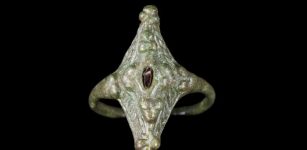 Extraordinary Kite-Shaped Pictish Ring Found At Moray Fort In Scotland
Archaeology | Sep 5, 2024
Extraordinary Kite-Shaped Pictish Ring Found At Moray Fort In Scotland
Archaeology | Sep 5, 2024 -
 Rhetorica ad Herennium: Ancient Book That Improves Your Memory Using Method Of Loci – You Can Test It Easily
Featured Stories | Feb 21, 2025
Rhetorica ad Herennium: Ancient Book That Improves Your Memory Using Method Of Loci – You Can Test It Easily
Featured Stories | Feb 21, 2025 -
 Lost Q Source Remains An Unsolved Biblical Mystery
Biblical Mysteries | May 7, 2017
Lost Q Source Remains An Unsolved Biblical Mystery
Biblical Mysteries | May 7, 2017 -
 Unique Ancient Roman Cavalry Swords Found In Cotswolds, UK
Archaeology | Sep 18, 2023
Unique Ancient Roman Cavalry Swords Found In Cotswolds, UK
Archaeology | Sep 18, 2023 -
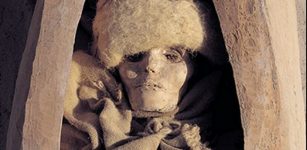 Mysterious Sleeping Beauty Of Loulan Mummy Is Still Perfectly Preserved After 3,800 Years!
Civilizations | Oct 30, 2014
Mysterious Sleeping Beauty Of Loulan Mummy Is Still Perfectly Preserved After 3,800 Years!
Civilizations | Oct 30, 2014


